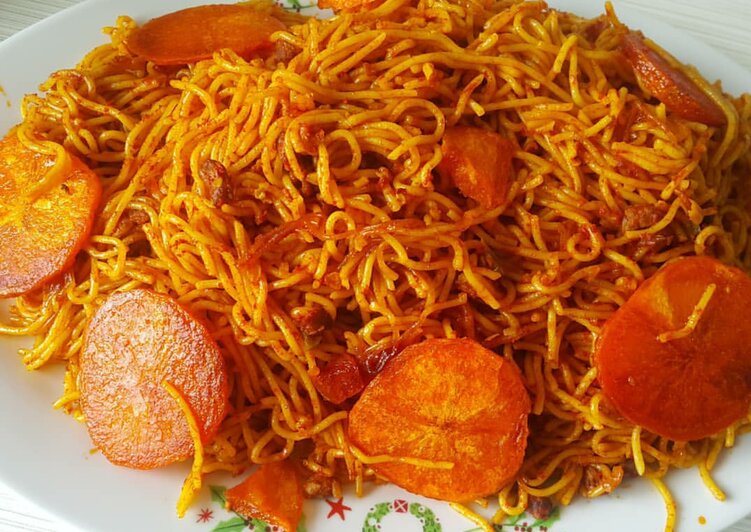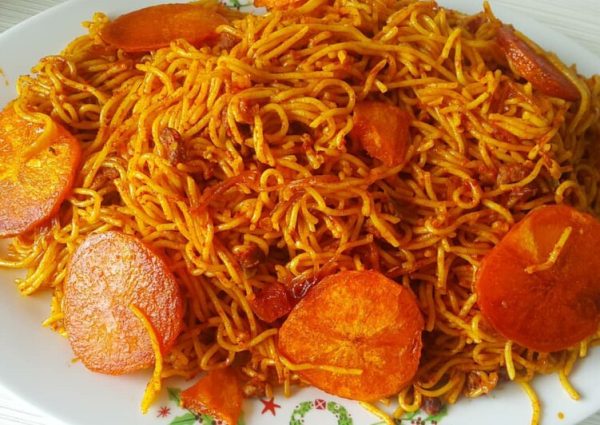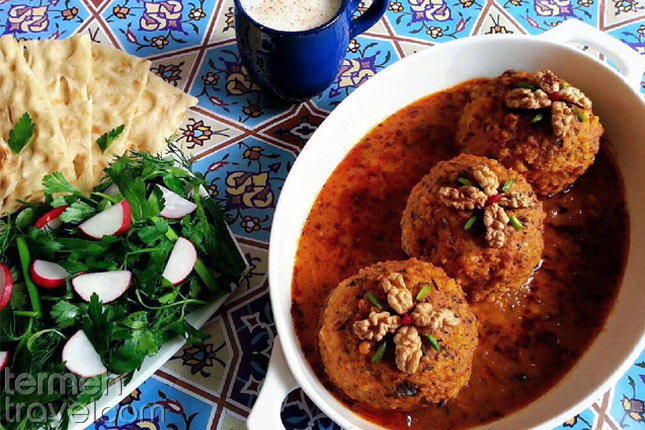Halim, also spelled Haleem, is a beloved Persian dish that has been cherished for centuries. Known for its rich cultural significance and versatility, Halim is enjoyed across Iran and beyond as a hearty breakfast, a nourishing Iftari during Ramadan, or a comforting dinner. This dish comes in various forms, each reflecting the unique traditions and flavors of different regions in Iran. The most popular types are Wheat Halim, a warming winter dish, and Halim Bademjan (Eggplant Halim), a fragrant and hearty meal perfect for lunch, Iftar, or dinner.
In this comprehensive guide, we’ll explore everything you need to know about Halim, from its history and cultural importance to detailed recipes for both Wheat Halim and Halim Bademjan. We’ll also delve into the nutritional benefits, regional variations, and tips for customizing this dish to suit your taste. Whether you’re new to Persian cuisine or a seasoned fan, this post will provide all the information you need to appreciate and enjoy Halim—and why it’s a must-try dish.
Table of Contents
What is Halim? A Brief History and Cultural Significance
Halim is a traditional Persian porridge-like dish with roots that trace back centuries in Persian and Middle Eastern culinary history. While its exact origins are debated, Halim is believed to have evolved from ancient grain-based dishes that were slow-cooked with meat and spices to create a nourishing, hearty meal. Over time, it became a staple in Persian households, particularly during religious observances and cold winter months.
Cultural Significance of Halim
In Iran, Halim holds deep cultural significance. It is often served during:
- Ramadan: As part of Iftari, the meal that breaks the day-long fast, due to its high nutritional value and ability to provide sustained energy.
- Muharram: A month of mourning in the Islamic calendar, where Halim is commonly prepared as Nazri—a charitable offering distributed to neighbors, friends, and passersby as a gesture of goodwill and community.
- Winter Months: Wheat Halim, in particular, is a popular winter dish, providing warmth and energy to combat the cold.
Beyond its religious connections, Halim is also a symbol of Persian hospitality. It’s a dish that brings people together, whether enjoyed as a family breakfast or shared with guests during special gatherings. In cities like Isfahan, a special version known as Milk Halim is traditionally served on Fridays, the Persian weekend, making it a cherished weekly treat.
A Personal Anecdote: Halim in Persian Households
Growing up in a Persian household, I remember the aroma of Halim wafting through the kitchen on cold winter mornings. My grandmother would slow-cook Wheat Halim overnight, and we’d wake up to a warm, comforting bowl topped with cinnamon and sesame seeds. During Ramadan, Halim Bademjan was a staple at our Iftar table, its rich flavors and creamy texture making it the perfect dish to break our fast. These memories highlight why Halim is more than just a meal—it’s a cultural experience that connects generations.
Wheat Halim: The Winter Warmer
Wheat Halim is the original and most traditional form of the dish. Made with wheat or barley, shredded meat (typically beef, lamb, or turkey), and a blend of spices, this version is slow-cooked for hours until it reaches a smooth, paste-like consistency. The long cooking process allows the flavors to meld beautifully, creating a dish that is both comforting and deeply satisfying.
- Best For: Winter breakfasts or post-fast meals during Ramadan.
- Key Ingredients: Wheat or barley, shredded meat, cinnamon, sesame seeds, and milk.
- Serving Suggestions: Garnish with cinnamon, sesame seeds, and a drizzle of oil. Serve sweet with sugar or savory with salt.
How to Make Wheat Halim: A Step-by-Step Recipe
Wheat Halim is the foundation of all Halim varieties, and mastering this recipe will give you the skills to experiment with other versions. Below is a detailed recipe for traditional Wheat Halim, complete with tips for achieving the perfect consistency and flavor.
Ingredients for Wheat Halim (Serves 4)
- 2 cups wheat germ or barley (1302 Cal)
- 4 cups water
- 300 g shredded meat (beef, lamb, chicken, or turkey) (750 Cal)
- 1 medium-sized onion (41 Cal)
- 1 ½ tsp salt (1 Cal)
- ½ tsp pepper (1 Cal)
- 2 cups whole milk (298 Cal)
- 2 tsp cinnamon (1 Cal)
- A generous pinch of sesame seeds (52 Cal)
- Sugar or salt to taste
- Optional: 1 tbsp vegetable oil for garnish
Instructions
- Prepare the Meat:
- In a medium pot, combine 2 cups of water, the shredded meat, half of the onion (peeled and halved), 1 ½ tsp salt, and ½ tsp pepper.
- Cook on low heat overnight (or for at least 6-8 hours) until the meat is tender and easily shreddable.
- Cook the Wheat or Barley:
- In a separate pot, bring 2 cups of water to a boil.
- Add the wheat germ or barley and reduce the heat to low.
- Simmer overnight (or for 6-8 hours) until the grains are fully cooked and soft.
- Combine and Blend:
- Once the meat is cooked, strain the broth and shred the meat finely.
- Mix the shredded meat with the cooked wheat or barley.
- Add 2 cups of whole milk to the mixture and simmer for an additional 30-40 minutes. Stir occasionally to prevent sticking.
- Garnish and Serve:
- Pour the Halim into serving bowls.
- Garnish with cinnamon, sesame seeds, and a small amount of shredded meat.
- For a richer flavor, drizzle a tablespoon of vegetable oil on top.
- Serve with warm bread and season with sugar or salt according to your preference.
Tips for Perfect Wheat Halim
- Consistency: Halim should have a smooth, porridge-like texture. If it’s too thick, add a little more milk or water while blending.
- Meat Choice: Chuck meat is ideal for its tenderness and flavor, but you can use any meat you prefer.
- Sweet or Savory: Wheat Halim is traditionally bland, so you can customize it with sugar for a sweet version or salt for a savory one.
- Make it Dairy-Free: If you prefer a dairy-free version, simply omit the milk. The dish will still be delicious and hearty.
Halim Bademjan or Eggplant Halim
Halim Bademjan is mostly served throughout the country during the Islamic holy months of Ramadan and Muharram of the Muslim Hijri calendar.
In the month of Ramadan, after fasting for most of the day, this is a go-to dish for Muslim breakfast (Iftar); it’s high in nutrition, protein, carbs, providing energy for the fasters after a long day of not eating food. In Muharram, people of Iran serve it as Nazri to their neighbours, or strangers passing by.
As I said, wheat Halim is the base of all other Halims; once you know the recipe of one Halim, you can pretty much cook the others just by changing a couple of main ingredients. For eggplant Halim, you will need to use rice instead of wheat, Kashk instead of cream, and add eggplants to the list.
Let me break it down for you.
What’s Kashk?
According to Wikipedia, “Kashk is a fermented food that is made from grain mixed with sour milk or yoghurt.” Kashk can be found in many forms and varieties. The Kashk that Persians use for cooking has a sour-cream like consistency, it is very salty, and depending on what animal-milk it is made from, it tastes different on the tongue, having an effect on the overall taste of your food.
Kashk can also be found in ball shapes, and be used as a snack throughout the day. Some people like to have a salty treat from time to time, and because Kashk is a dairy product, some consider it as a healthy snack.
My advice to you, taste the Kashk you bought for cooking and keep in mind its saltiness; this will come in handy when you are seasoning your food with salt.
Note
While peeling your eggplants be sure to remove the stem, and for a faster cooking process, you can cut the eggplants into three-inch pieces. Since everything is going to be blended together, you don’t need to be specific in how you cut them.
Halims can be a simple snack on your busy days, or they can be a full three-course meal, sweet or salty, burning hot or semi-cold, you can enjoy them however you like. They are extremely versatile, and you can’t go wrong with this amazing Persian cuisine.
I hope this post makes you want to try it, let me know in the comments if you do and for more recipes like this try Top Iranian Foods.
How to Make Halim Bademjan: A Step-by-Step Recipe
Halim Bademjan is a more complex dish, but the extra effort is well worth it for its rich, aromatic flavors. This recipe includes eggplant, rice, lentils, and Kashk, making it a complete meal on its own.
Ingredients for Halim Bademjan (Serves 6)
- 4 medium eggplants
- ½ cup lentils
- 200 g lamb (or beef)
- 2 onions
- ½ cup rice
- 2 cloves garlic
- 2 tbsp Kashk (fermented dairy product)
- ½ cup walnuts (chopped)
- 1 tbsp dried mint
- Salt, pepper, turmeric, and oil as needed
Instructions
- Cook the Meat:
- In a pot, combine the lamb, one whole onion (peeled), turmeric, and garlic with 2-3 cups of water.
- Cook on low heat for 2-3 hours until the meat is tender.
- Once cooked, shred the meat and set aside, reserving 1 cup of the meat broth.
- Prepare the Eggplants:
- Peel the eggplants and cut them into 3-inch pieces.
- Sprinkle with salt and let them sit for 30 minutes to remove bitterness.
- Rinse and pat dry, then fry in oil with a pinch of turmeric until golden and tender.
- Cook the Lentils and Rice:
- Soak the lentils for 30 minutes, then cook in 2-3 cups of water until tender.
- Add the rice to the lentils and cook until both are soft and mashable.
- Assemble the Halim:
- Add Kashk and Garnish:
- Stir in 2 tbsp of Kashk and mix well.
- In a separate pan, fry sliced onions until golden, grate and stir-fry the remaining garlic, and fry dried mint in oil for 2 minutes.
- Garnish the Halim with fried onions, garlic, mint, and chopped walnuts.
- Serve:Serve Halim Bademjan with warm bread and enjoy!











Amazing website and Delicious recipe
Thank you so much for your kind comment 🙂
That is not what Halim bademjon contains!
Please tell what it contains then
All Iranian dishes are very delicious! 😛
I really enjoyed reading about the tradition of this dish.
My sweet iranian friend and neighbor brought me a bowl of Haleem yesterday for me to try for breakfast today.
The ingredients are quite interesting and something I’d never thought would go well together. But since I’ve loved everything my friend has shared with me so far, I have no doubt that it will be delicious.
Iran ~ great history, great food and most of all amazingly sweet, warm and generous people.
Thanks For Sharing this amazing recipe. My family loved it. I will be sharing this recipe with my friends. Hope the will like it.
You are totally welcome
After travelling to Iran many times and trying haleem, I’d have to say this doesn’t taste nearly as good as what they have sadly. I think there wasn’t enough meat to wheat in this recipe, other recipes say you should use the same amount.
Thanks for the information in your post
You are totally welcome. Enjoy.